The Royal Navy’s Motor Gun Boat (MGB) emerged in response to the threat posed by German S-boats. Operating from their bases on the Dutch, Belgian and French coasts, S-boats posed a significant threat to British coastal convoys for which the Royal Navy were not prepared. Sufficient number of warships were not available to adequately protect every convoy and, although equivalent Royal Navy motor boats were becoming available in greater numbers, they were ill equipped to engage the German boats. Motor Torpedo Boats (MTBs) lacked sufficient firepower and their torpedoes were useless against fast moving and shallow hull boats. Motor Anti-Submarine Boats (MA/SBs) were similarly under equipped and too underpowered to counter this threat. What was required was a boat of comparable speed to the MTB, but with increased firepower that would allow them to directly engage the S-boats.
Around the country, small boat manufacturers were producing a variety of MTBs, both for the Royal Navy and other countries. Those being built for foreign navies were hastily requisitioned by the Admiralty and the orders amended to MA/SBs. The first MGBs evolved from these MA/SBs, which were re-engined and given heavier weaponry (largely using whatever was available). MA/SBs still under construction (principally at British Power Boats’ yard at Hythe) were completed as gunboats and from January 1941 onwards, were formally commissioned as MGBs. British Power Boat produced a design for a purpose built MGB in February 1942 and existing Admiralty orders for MA/SBs were changed to the new design. At the same time, both Elco and Higgins boats became available from the US under Lend/Lease and were hurriedly rushed into service.
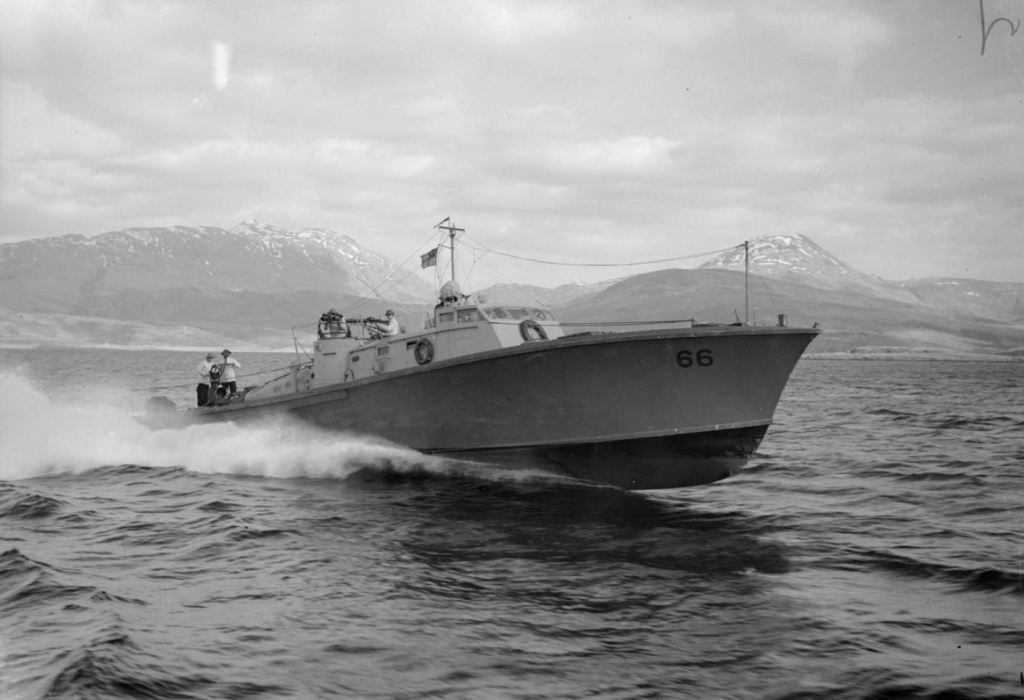
These early boats were all hard chine semi planing hulls of between 63ft and 71ft. The Admiralty desire for a larger boat capable of engaging S-boats led to the design of an 115ft gunboat that would ultimately be built by Fairmile as the Fairmile D, or Dog Boat. As a stopgap solution, in 1940 Fairmile A designs were adapted to produce a more powerful form of motor launch, which would be classified as the Fairmile C. These ‘long’ boats began to enter service in 1941, followed by the first truly purpose built MGBs, the 71ft 6in Mk V ‘short’ boats built by British Power Boat in the spring of 1942. The Fairmile Ds began to enter service later that year.
Early MGBs kept the same pennant number as their MA/SB identity and, as MA/SB’s 1 to 5 and 22 to 39 were never recommissioned, these numbers were never used by MGBs. Instead, the pennant list starts at number 6, the first 70ft MA/SB. Because pennant numbers were assigned at the point of order (or the point at which boats under construction were requisitioned) and not at the point of commissioning, many of the MGBs entered service out of numerical order. As a result, there is no consistent pattern to the allocation of pennant numbers to boats. The Fairmile and Camper & Nicholson MGB pennant numbers came from the chronological allocation of Motor Launch (ML) pennants.
Apart from two flotillas of Fairmile Ds that were sent to the Mediterranean, all MGBs served around Britain, operating in the English Channel and North Sea, off the coasts of France, Belgium, the Netherlands, Denmark and Norway.
The reclassification of all MGBs to MTBs in 1943 brought an end to the MGB pennant numbers. All 71ft 6in British Power Boats were given MTB pennants starting with 412, and all boats still building were completed as MTBs (although many without torpedo tubes). All of the Fairmile Ds, except those in the Mediterranean, were reclassified as ‘all purpose’ MTBs, although like the 71ft 6in boats they retained their gun boat armament and were MGBs in all but name.
Existing 70ft British Power Boat, Elco and Higgins MGBs were not reclassified and retained the MGB pennant, but many were struck from Admiralty lists and reallocated to the War Department or the Royal Air Force at around the same time. Only the few boats retained by the Admiralty, along with the Fairmile Cs, the Camper & Nicholson boats and the Mediterranean Fairmile Ds were still classified as MGBs at the end of the war.
70ft British Power Boat ‘Whaleback’ MGB
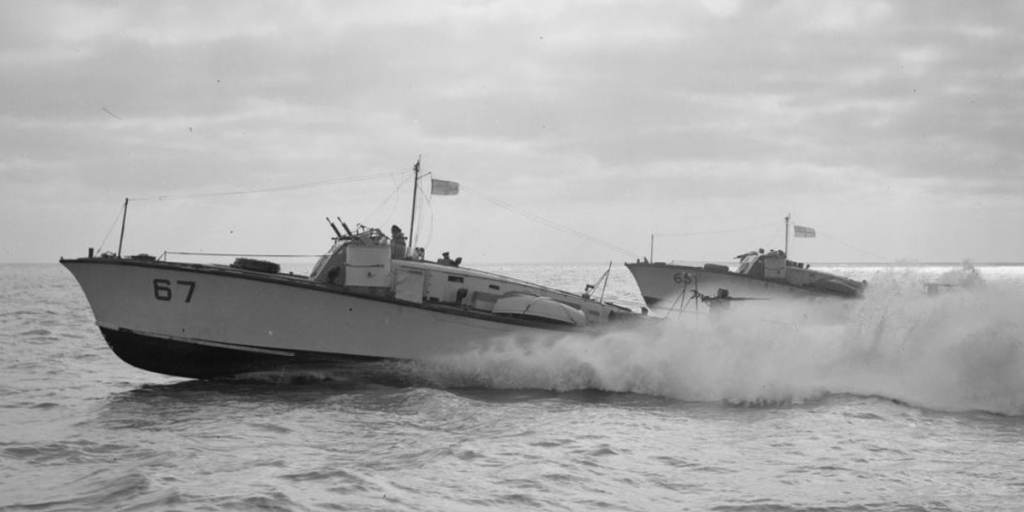
| Pennants: | 6–21, 46, 50–67 |
| Builder: | British Power Boat Company |
| Dimensions: | Length: 70ft Beam: 20ft Draught: 4ft |
| Machinery: | 2x Napier Sea Lion petrol engines (6-21) 3x Rolls Royce petrol engines (46, 50-67) |
| Top Speed (laden): | 26 knots (6-21) 36 knots (46, 50-67) |
| Typical Armament: | 2x twin Vickers 0.5” machine gun turrets 1x 20mm Oerlikon or 2 pounder Rolls Royce gun 2x Mk VI depth charges |
| First Entered Service: | December 1939 (as MA/SBs) |
| Total in Service: | 35 |
| Losses: | 6 destroyed and 4 damaged beyond repair. |
| Notes: | Pennants 6–21 were originally ordered by the Admiralty as MA/SBs, 46 as Dutch torpedo boat TMB 51 and 50–67 as French torpedo boats VTB 34 – 40. All were eventually converted to MGBs, some after completion while others were reclassified during construction. |
63ft British Power Boat ‘Whaleback’ MGB
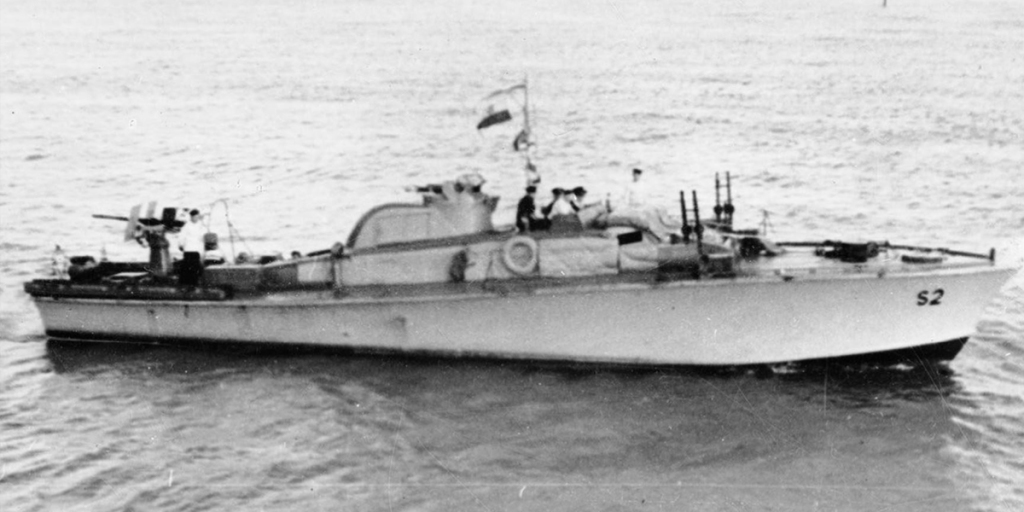
| Pennants: | 40–45 |
| Builder: | British Power Boat Company |
| Dimensions: | Length: 63ft Beam: 15ft Draught: 4.5ft |
| Machinery: | 2x Rolls Royce petrol engines |
| Top Speed (laden): | 36 knots |
| Typical Armament: | 1 or 2 twin Vickers 0.5” machine gun turrets 1x 20mm Oerlikon 2x twin .303 machine guns 2x Mk VI depth charges |
| First Entered Service: | June 1940 (as MA/SBs) |
| Total in Service: | 6 |
| Losses: | – |
| Notes: | Originally ordered as Swedish MTBs T1–2 and Norwegian MTBs 1–4. MGB 44 was later transferred to the Polish Navy as Ścigacz Artyleryjski S2. |
75ft White MGB
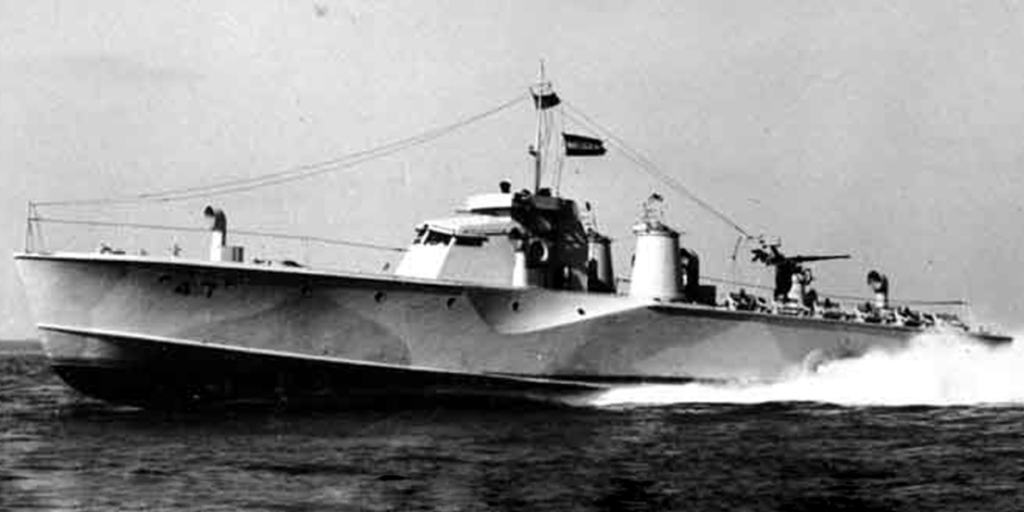
| Pennants: | 47–48 |
| Builder: | J Samuel White |
| Dimensions: | Length: 75ft Beam: 16.5ft Draught: 4.5ft |
| Machinery: | 3x Isotta-Fraschini petrol engines |
| Top Speed (laden): | 33 knots |
| Typical Armament: | 2x twin Vickers 0.5” machine gun turrets 1x 20mm Oerlikon 2x Mk VI depth charges |
| First Entered Service: | August 1940 (as MA/SBs) |
| Total in Service: | 2 |
| Losses: | – |
| Notes: | Originally ordered as Polish MTBs but requisitioned by the Admiralty. MGB 48 was later transferred to the Polish Navy as Ścigacz Artyleryjski S1. |
69ft Higgins MGB
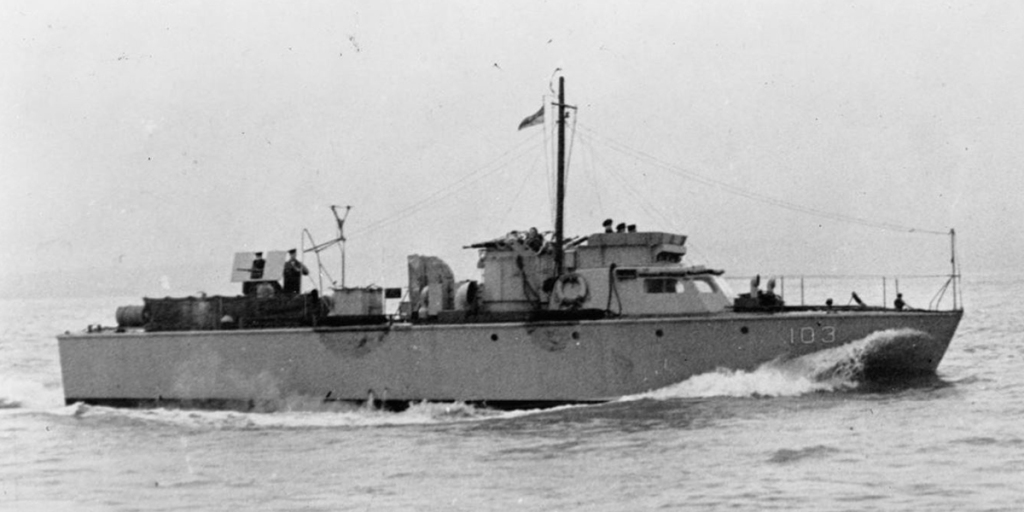
| Pennants: | 68–73, 100–106 |
| Builder: | Higgins Industries |
| Dimensions: | Length: 69ft Beam: 19ft Draught: 4.5ft |
| Machinery: | 3x Hall-Scott petrol engines |
| Top Speed (laden): | 27 knots |
| Typical Armament: | 2x twin Vickers 0.5” machine gun turrets 1x 20mm Oerlikon 2x Mk VI depth charges |
| First Entered Service: | November 1940 |
| Total in Service: | 13 |
| Losses: | – |
| Notes: | Early Higgins Industries PT boats provided to Britain under Lend-Lease. |
71.5ft British Power Boat MkV MGB
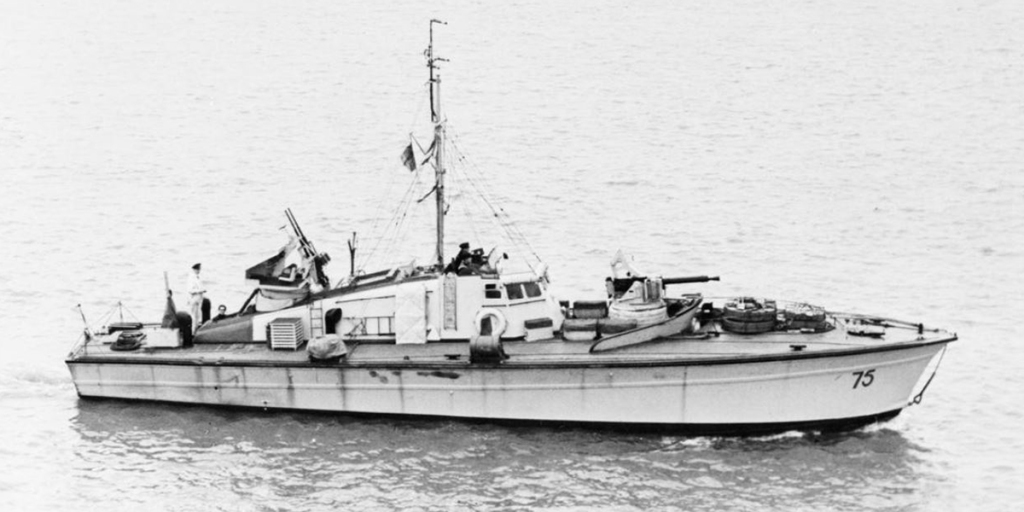
| Pennants: | 74–81, 107–127 |
| Builder: | British Power Boat Company |
| Dimensions: | Length: 71.5ft Beam: 20.5ft Draught: 5ft |
| Machinery: | 3x Packard M-2500 petrol engines |
| Top Speed (laden): | 40 knots |
| Typical Armament: | 1x 2 pounder 40mm pom-pom gun 1x twin 20mm Oerlikon 2x twin .303 machine guns 2x Mk VI depth charges |
| First Entered Service: | February 1942 |
| Total in Service: | 29 |
| Losses: | When serving as MGBs: 4 sunk, 1 damaged beyond repair. |
| Notes: | The first purpose built MGBs, which saw extensive service in the North Sea and English Channel. In the summer of 1943, when these boats were reclassified at MTBs, the 24 that still survived were recommissioned as MTBs 412–418 and 430–446 (seven of these were subsequently lost after the reclassification). MGBs that were still being built (MGBs 128–138) were instead commissioned as MTBs 447–457, so were never officially MGBs. All new boats of the Mk V design were completed as Mk VI MTBs (from MTB 458) instead. |
70ft Elco MGB
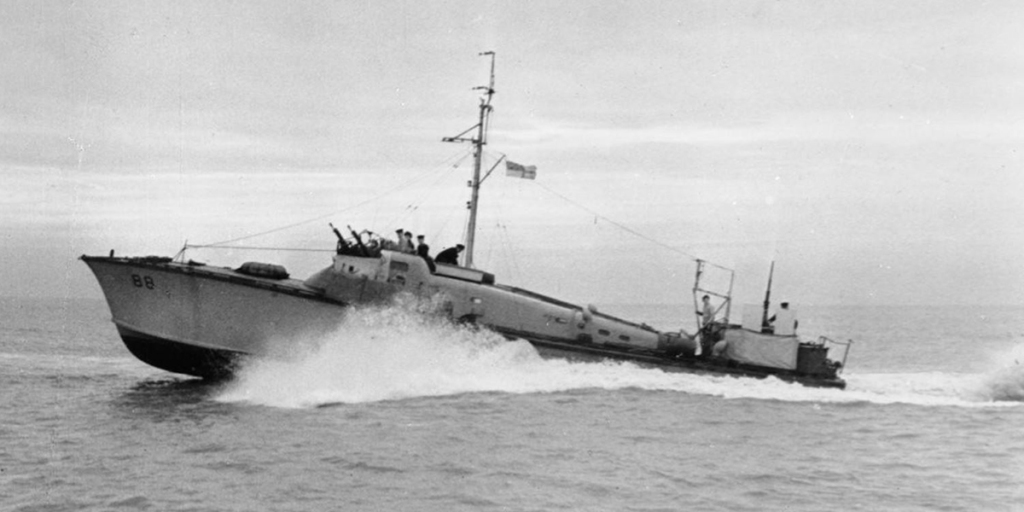
| Pennants: | 82–93 |
| Builder: | Elco Naval Division |
| Dimensions: | Length: 70ft Beam: 20ft Draught: 5.5ft |
| Machinery: | 3x Packard M-2500 petrol engines |
| Top Speed (laden): | 36 knots |
| Typical Armament: | 2x twin Vickers 0.5” machine gun turrets 1x 20mm Oerlikon 2x Mk VI depth charges |
| First Entered Service: | November 1940 |
| Total in Service: | 12 |
| Losses: | 2 |
| Notes: | Elco boats produced to the same design as British Power Boat 70ft boats. Originally constructed as PTC boats 1–12 and provided to Britain under Lend-Lease. |
65ft A & C de la Loire MGB
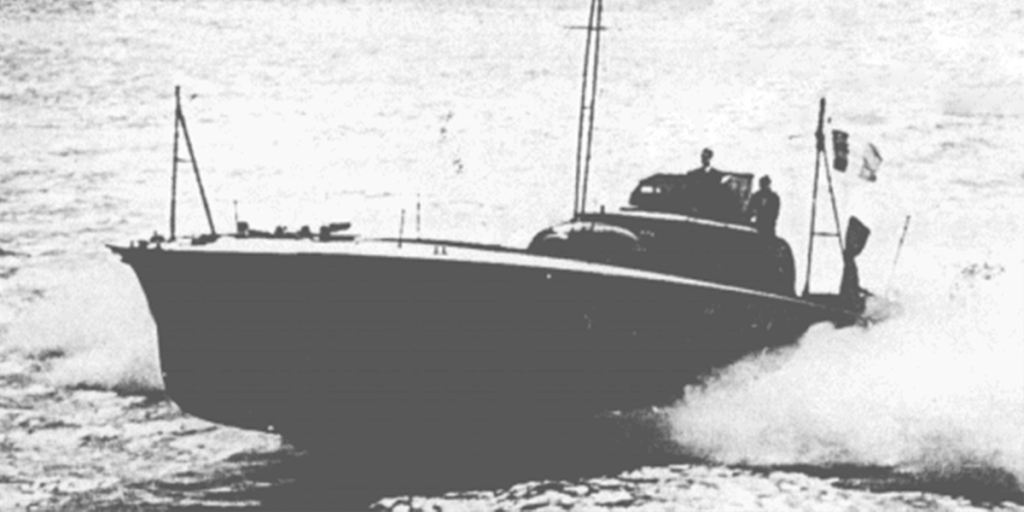
| Pennants: | 98–99 |
| Builder: | Ateliers & Chantiers de la Loire, Nantes |
| Dimensions: | Length: 65ft Beam: – Draught: – |
| Machinery: | 2x Lorraine petrol engines |
| Top Speed (laden): | – |
| Typical Armament: | – |
| First Entered Service: | 1940 |
| Total in Service: | 2 |
| Losses: | 1 destroyed and 1 damaged beyond repair. |
| Notes: | French VTBs that escaped after the fall of France. Most sources state they were VTBs 11 and 12, others that they were 13 and 14. |
78ft Higgins MGB
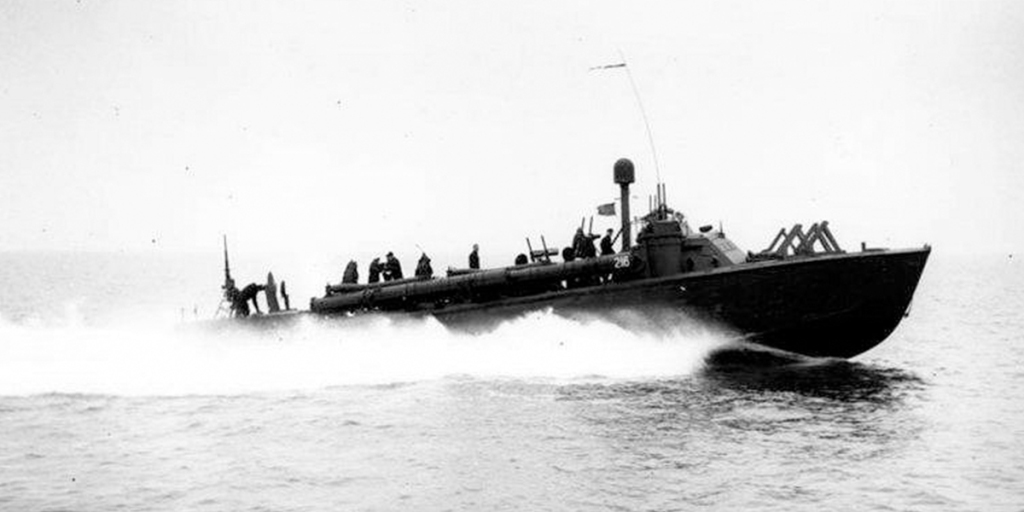
| Pennants: | 177–192 |
| Builder: | Higgins Industries |
| Dimensions: | Length: 78ft Beam: 20ft Draught: 5.5ft |
| Machinery: | 3x Packard M-2500 petrol engines |
| Top Speed (laden): | 40 knots |
| Typical Armament: | 2x twin Vickers 0.5” machine gun turrets 2x 20mm Oerlikon 2x twin .303 machine guns 2x Mk VI depth charges |
| First Entered Service: | October 1944 |
| Total in Service: | 16 |
| Losses: | – |
| Notes: | Ex-US PT boats 201–217 of the 15th Flotilla (not including 202 and not renumbered sequentially). In October 1944 these boats were stripped of their torpedoes and handed over to the Royal Navy in the Mediterranean. |
Fairmile C MGB
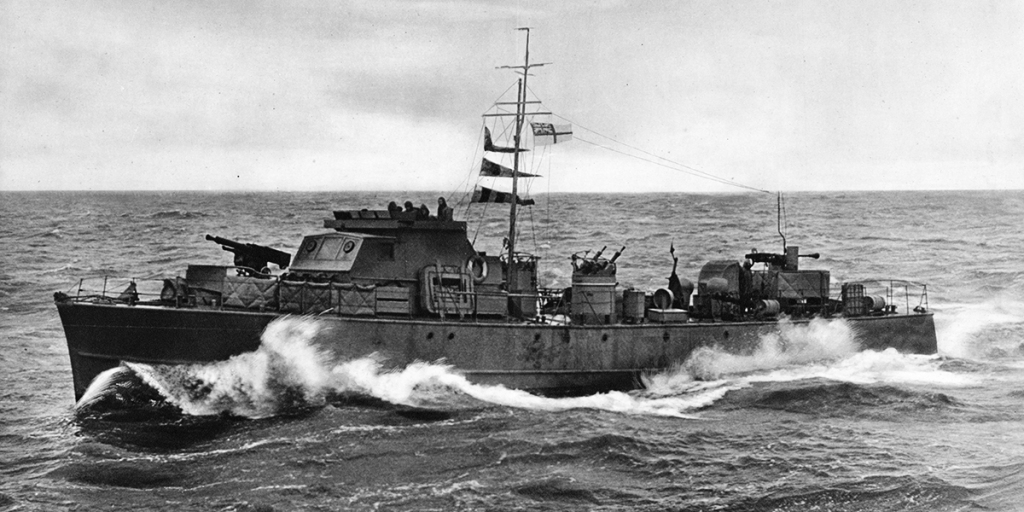
| Pennants: | 312–335 |
| Builder: | Fairmile Marine Company |
| Dimensions: | Length: 110ft Beam: 17.5ft Draught: 6ft |
| Machinery: | 3x Hall-Scott petrol engines |
| Top Speed (laden): | 26 knots |
| Typical Armament: | 1x 2 pounder 40mm pom-pom gun 1x 2 pounder Rolls Royce gun 2x twin Vickers 0.5” machine gun turrets 2x twin .303 machine guns 4x Mk VI depth charges |
| First Entered Service: | June 1941 |
| Total in Service: | 24 |
| Losses: | 5 (4 sunk, 1 captured) |
| Notes: | Like all other Fairmile boats, the components were prepared at Fairmile Marine’s yard in Cobham, Surrey. The 24 boats were then assembled at 13 yards around Britain. Based on the design of the earlier Fairmile A but considerably up-gunned and with more powerful engines, these boats were considered an interim and quick response to the threat of S-boats. |
Camper & Nicholson MGB
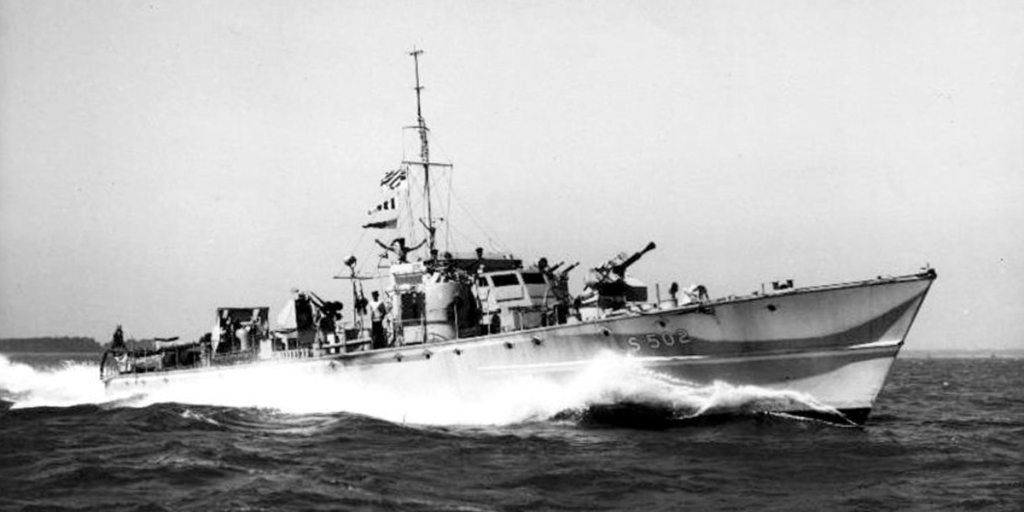
| Pennants: | 501–505, 507, 509 |
| Builder: | Camper & Nicholson |
| Dimensions: | Length: 117ft Beam: 20ft Draught: 4ft |
| Machinery: | 501, 509: 3x Packard M-2500 petrol engines 502–505, 507: 3x Davey Paxman diesel engines |
| Top Speed (laden): | 30 knots |
| Typical Armament: | 1x 2 pounder 40mm pom-pom gun 2x twin Vickers 0.5” machine gun turrets 1x twin 20mm Oerlikon 1x 6 pounder QF gun 2x twin .303 machine guns |
| First Entered Service: | May 1942 |
| Total in Service: | 7 |
| Losses: | 3 (not including 2 lost while serving as blockade runners) |
| Notes: | Nine boats were originally ordered by the Turkish government, but were all requisitioned for the Royal Navy during construction. 501–503 and 509 were completed as MGBs, but whilst under construction, 504–508 were modified to become Merchant Navy blockade runners. These boats participated in Operation Bridford where the two boats originally intended to be 506 and 508 were lost. In 1944 the 3 surviving blockade runners were recommissioned as MGBs 504–505 and 507 and in 1945 all the surviving boats were re titled MGBs 2002–2005, 2007 and 2009. |
Fairmile D MGB
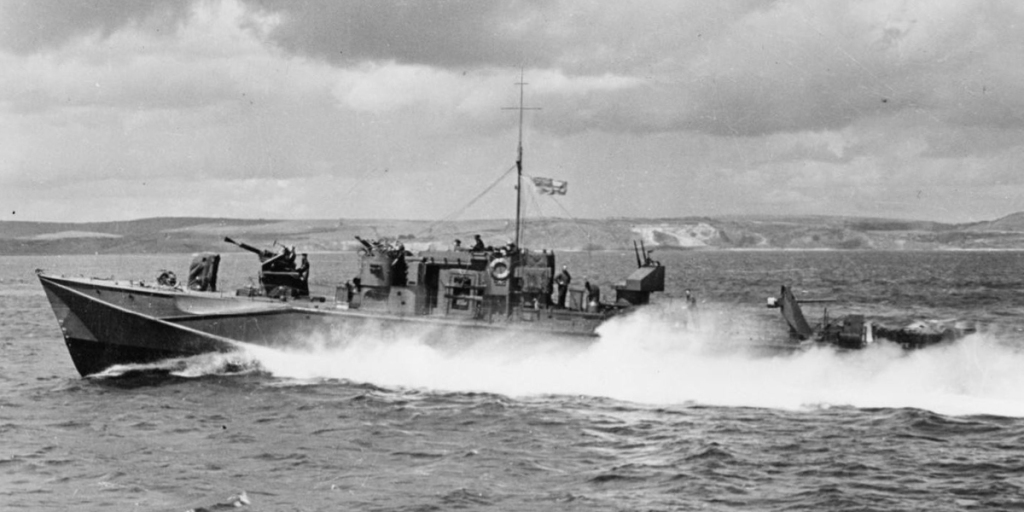
| Pennants: | 601–616, 641–648, 657–664, 673–680, 689–694 |
| Builder: | Fairmile Marine Company |
| Dimensions: | Length: 115ft Beam: 21ft Draught: 4ft |
| Machinery: | 4x Packard M-2500 petrol engines |
| Top Speed (laden): | 35 knots |
| Typical Armament: | Early War: 1x 2 pounder 40mm pom-pom gun 2x twin Vickers 0.5” machine gun turrets 1x twin 20mm Oerlikon 1x 6pdr QF gun 2x twin .303 machine guns Late War: 2x 6 pounder Molins guns 2x 20mm Oerlikon 1x twin 20mm Oerlikon 2x twin .303 machine guns |
| First Entered Service: | March 1942 |
| Total in Service: | Approx. 46 |
| Losses: | 9 |
| Notes: | The exact number of Fairmile Ds commissioned as MGBs is difficult to ascertain, and most authoritative sources do not exactly agree. The first 16 Ds ordered were intended as MGBs, but even some of these were later converted to carry torpedoes. Many later model MGBs were reclassified as MTBs in 1943, some mere months after they had been launched, but were never re-equipped with torpedoes. The above totals reflect the boats that served in the 17th, 18th, 19th, 20th, 21st and 22nd MGB Flotillas, although some of the 9 losses occurred after their reclassification as MTBs. |
© Spitfires of the Sea

